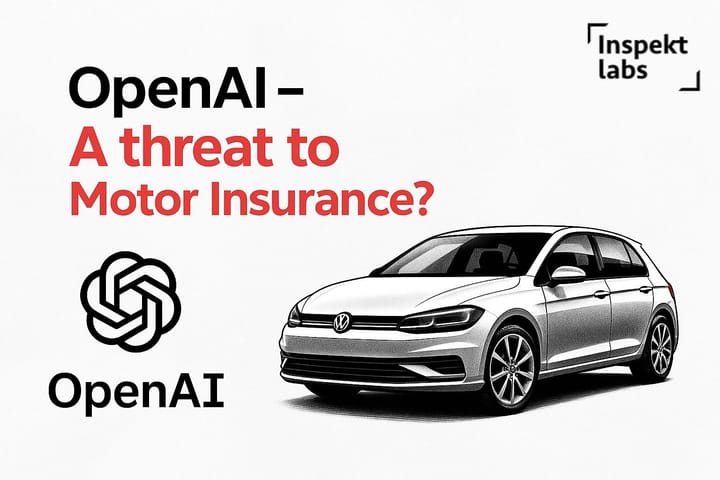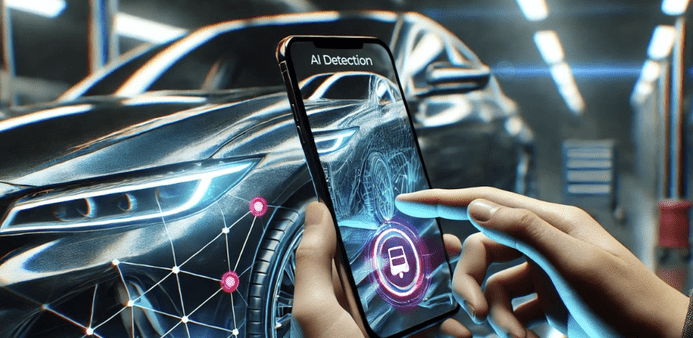5 cost-saving tips for Motor Insurance companies in 2025
In this blog, we will talk about the different steps that can be automated using AI which will help Motor Insurance companies reduce operational costs while also improving process efficiency and customer satisfaction.

Motor Insurance companies are always on the look-out for innovative ways to reduce costs while also improving their process' efficiency and customer satisfaction.
Thanks to the digital revolution in today's time, Motor Insurance companies can easily achieve this goal by implementing aAI and automation in different processes across the business.
In this blog, we will talk about the different steps that can be automated using AI which will help Motor Insurance companies reduce operational costs while also improving process efficiency and customer satisfaction.
How can Motor Insurance companies save costs?
Underwriting Inspections

Underwriting is the process where insurers assess the risk involved in insuring a vehicle and its owner before issuing a policy. This is done to understand the vehicle's history and usage in order to generate a better premium and coverage policy.
This is a crucial process in markets like South/South East Asia, Africa, and South America due to higher fraud rates, where vehicle owners will try to raise a claim for pre-existing damages.
While this process has largely been abandoned in developed markets like the US and Western Europe due to lower fraud rates and high costs of manual inspections (ranging from $200-$300 per inspection), it is still highly recommended to complete this process before issuing a policy to avoid any risk of fraud.
Digital vehicle inspection tools like Inspektlabs that are powered by AI can help solve this problem by enabling self-inspections at very nominal costs, eliminating the need of a manual inspection, and can be easily enabled in developed markets such as the US and Western Europe as well, which will further reduce the chances of fraud.
Inspektlabs' AI model for damage detection is trained to identify damages on all types of vehicles and is also capable of flagging instances where car owners might hide damages or switch vehicles, which can save insurance companies a significant amount of money in the process.
FNOL Decision-making
In the First Notice of Loss (FNOL) stage, the insurer gauges the vehicle's state and decides if the vehicle needs to go to a body shop, a salvage yard, or a SMART repair network.
However, this process is largely manually-driven at the moment, and is prone to delays and errors during submission. These delayed or incorrect FNOL submissions can cost an additional $250-$600 per claim (source).
By enabling AI at this step, the decision-making process of whether a vehicle needs to repaired, replaced, or scrapped completely can easily be automated by analysing repair estimates and vehicle valuations to determine the most cost-effective course of action for the motor insurance company.
Repair Estimation

While large claims involving internal damages cannot be fully automated with AI and still requires an inspector to check the vehicle manually, smaller claims such as dents, scratches, windshield damage etc. (which account to 15%-20% of the total claims) can be processed through STP (straight-through processing) where the claims process is automated end-to-end, removing the need for an assessor.
This will not only help insurance companies save costs, it will also significantly reduce the time taken to process claims, and also improve the overall customer satisfaction in the process.
Claim Review
Since large claims involving internal damages require a human inspector to manually check the vehicle, they are often prone to error due to subjectivity. And in these cases, errors can prove to be costly for the insurance company.
Additionally, these inspections, when done manually also take longer (2--30 min per inspection), and aren't free from bias, causing inconsistencies in estimates depending on the inspector's approach and date of teh assessment.
With the power of AI, these errors and inconsistencies can be significantly reduced, and there can be some form of standardization applied to the process. It also helps reduce the time taken per inspection from 20-30 minutes to barely 20 seconds.
AI can act as an additional layer of analysis and can be used as a means to review and rectify the report generated by the inspector, ensuring that the final report is free from subjectivity, inconsistency, and errors.
Subrogation

Subrogation is the process where an insurance company, after paying out a claim to its policyholder, seeks reimbursement from the party responsible for the loss. This typically happens when another driver is at fault for an accident, and the insurer of the affected policyholder wants to recover the costs from the at-fault driver's insurer.
The current process of Subrogation is very labor-intensive, requiring a lot of back and forth, and the decision-making process can be delayed because the company fails to identify the person who is actually responsible for the damages.
Additionally, this process is very subjective and can be gamed easily by faking evidence, which will lead to fraud in the process.
By enabling AI, insurance companies can not only reduce the amount of time and effort taken in the process of decision-making but can also reduce the chances of fraud as the AI model is able to make more accurate predictions based on the evidence provided. Additionally, it can also identify instances of evidence-tampering and fraud, which will help insurance companies make more informed decisions during the subrogation process.
Conclusion
By leveraging AI and automation across key processes like Underwriting Inspections, FNOL decision-making, repair estimation, claim review, and subrogation, motor insurance companies can achieve significant cost savings while improving efficiency and customer satisfaction. These technologies not only reduce manual errors and fraud but also streamline operations, enabling insurers to make faster, data-driven decisions.
As the industry moves towards a more digitized future, embracing AI-powered solutions will be crucial for staying competitive in 2025 and beyond. Insurers that adopt these innovations early will not only cut operational costs but also enhance their ability to deliver seamless, transparent, and customer-friendly services - ultimately driving growth and profitability.
If you'd like to explore how Inspekltabs can help your insurance business save money in 2025, contact us now.



